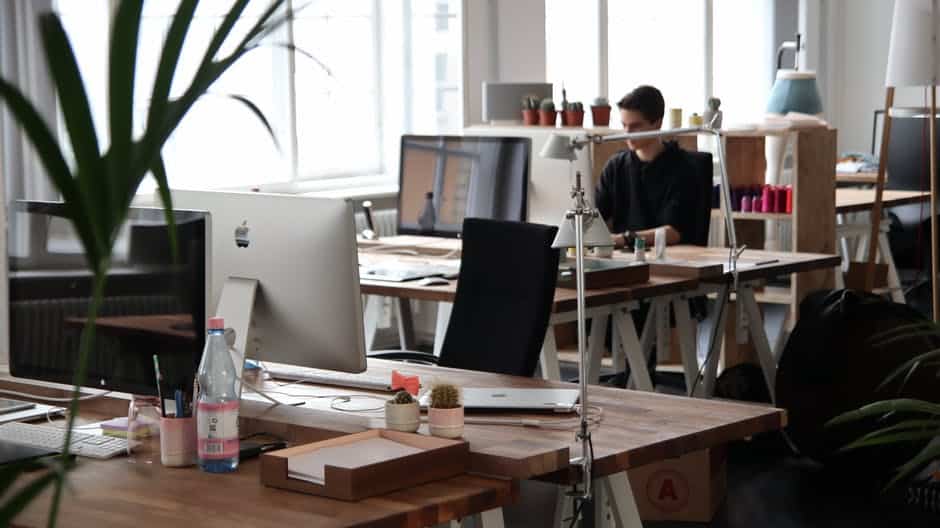- Interview Prep
- Star Method For Answering Questions
- Interview Preparation Checklist
- Star Interview Questions
- Words To Use In An Interview
- Mock Interview Preparation
- How To Make A Good Impression
- Bring Writing Samples
- How To Relax Before An Interview
- Interview Coaching
- Common Video Interview Mistakes
- Common Phone Interview Mistakes
- How To Ace Your Interview For A Remote Job
- Good Weaknesses For A Job Interview
- Good Strengths For A Job Interview
- How To Prepare For A Phone Interview
- Talk About Being Laid Off
- How To Decline An Interview
- How Early Should You Arrive For An Interview
- Interview Etiquette Tips
- Phone Interview Tips
- How To Ace A Phone Interview
- Types Of Interviews
- Communication
Find a Job You Really Want In
- It’s All About Impressions
- Prepare as You Would for a Traditional Interview
- Non-Traditional Steps to Prepare
- How to Get to the Table
- Some Notes on Lunch Interview Etiquette
- How to Order
- Let the Interviewer Lead
- Be Professional, Even if You Are Being Social
- About the Bill
- Follow Up and Say Thank You
- Sign Up For More Advice and Jobs

Okay, a lunch interview.
Either the interviewer is really busy and can just barely fit you into their schedule while stuffing caesar salad into their mouths, or they’re the hip type who like to be non-traditional — you know, like they’ll say something like, “we don’t wear shoes in the office because we like to let people be themselves.”
And I know what you’re thinking because we’ve all been there: Are they serious? They want you to conduct what might be the single most important conversation of your life in the presence of mozzarella sticks?
Well, never fear, it’s actually pretty similar to a standard interview in many ways, with only a few subtle caveats and some pretty obvious preparations you can do.
Follow the tips below, and there’s no way your lunch interview will be ruined….That is, unless they run out of marinara for your cheese sticks. That’s some end of days stuff right there.
It’s All About Impressions
There’s a strong possibility that they’re trying to impress you if you’re actually a competitive candidate that they want to secure. Also, they might actually be trying to gauge how you’ll perform at a business lunch.
There are certain things that interviews are meant to cover: how you maintain eye contact, how you speak, if you can joke, and how you generally interact as a human being with other human beings.
But depending on the level of seniority or type of position you’re going for, some of the soft skills that make you more qualified than other candidates may simply be how enjoyable you are to be around.
This is the fundamental aspect of any interview, and you’re doing a good job by looking at this guide. Think about it like this: they know your general qualifications and have a rough idea of what you’re capable of, because they have your application and your resume.
More or less what an employer is looking to do in any interview, particularly a casual one like a lunch interview, is to:
-
Find reasons why they like you as a person, or
-
Figure out if you’re going to be awful to work with.
Preparation is key to making employers think the first one is true, and hiding the fact that you’re awkward to talk to and kind of strange (or if you just suck to work with).
Prepare as You Would for a Traditional Interview
Dress as you would for an interview, no matter how informal you think it may be.
You should get your elevator pitch practiced to perfection and you should still bring the usual stuff with you.
Research the company beforehand — your time will be limited due to the length of the meal, and this will help keep you from asking questions that you could easily answer yourself and make you look prepared.
Lunch interviews often come up as the second interview format, so make sure you’ve got a solid list of questions to ask the interviewer — and be ready for behavioral curveball questions.
Non-Traditional Steps to Prepare
And just as you should research your route to the office and read a bit about your interviewers, if you’re lucky or resourceful enough to find out about them, you should also familiarize yourself with the restaurant and its location.
First off, take a look at the menu and call ahead to work out any allergy issues — it’s best to avoid changing restaurants at the last minute, for obvious reasons.
You don’t need to be ready to order immediately, but in the event that this interview is taking place over lunch because of the interviewer’s packed schedule, you’ll want to minimize the time you spend deciding between sweet potato and regular fries.
If you’ve never been to the restaurant before, try to determine what sort of vibe and noise level you’re in for. Since you can’t have notes out as easily during a lunch interview as a regular one, you should take additional time before the interview to review important information.
You can still bring a little cheat sheet of questions or a notepad for writing things down, but that’s about it as far as materials you can have on hand.
How to Get to the Table
First off, confirm the location — don’t assume that you’re meeting at a particular branch of a restaurant because of its proximity to the office — and arrive fifteen minutes early.
Arrive about 15 minutes early so you can avoid the horribleness of wondering whether or not they’re already in there waiting for you.
Wait for them at the front, just as you would at a reception desk — combined with the early arrival, you can save yourself some awkward roaming around the restaurant looking for an irate businessperson by making sure that you catch them coming in.
Some Notes on Lunch Interview Etiquette
In addition to the short-on-time and we’re-super-hip reasons for a lunch interview, you should always assume that the interviewer is judging how you’ll present yourself in a similar business situation if hired, especially if it’s for a position that requires a lot of client-facing schmoozing.
Make your folks proud: elbows off of the table, say please and thank you, put your napkin on your lap, and maintain good posture. And even if you were raised by wolves, chew with your mouth closed.
And just in case you’re the type of person who believes that treating service staff as inferiors makes you seem important, I would also encourage you to both stop being awful people-garbage and increase your chances of getting the job by being engaging and polite to the staff. The interviewer is watching everything you do.
How to Order
Last. Always try to order after the interviewer, so you can gauge what’s an acceptable price range and how the interviewer treats their lunches.
The odds are that the interviewer has dined here before, so you can typically play it safe and ask what they would recommend. If the interviewer tries to be courteous and insists that you order first, however, it’s a bit dicier.
Go light; even eating a huge breakfast so you can stick to a salad or something similarly forkable and clean. Whipping strands of sauce-covered linguine all over the place is going to demand some attention and a heavy sandwich is going to risk your dry cleaning and embarrassment, so the suggestion here is to focus more on the conversation than the food.
Unless they order those cheese sticks, because then you go in on them — they’ll respect your gusto, it shows that you’re a fallible human.
And on a parting note, I urge you to stay clear of booze, even if the interviewer(s) do not. You can celebrate over drinks later, but for now, you need to stay on your game.
Let the Interviewer Lead
The tone of a lunch interview isn’t as pre-determined as a normal one. Because of this, it’s best to follow your interviewer’s lead and mirror their conversational style as much as possible. For instance, if they start with small talk and lots of personal conversation, feel free to throw some more personal questions their way.
Just be sure to avoid controversial topics like politics, religion, etc., and if your interviewer brings one of them up, respond in a non-commital, friendly way without engaging further in the discussion.
That being said, when the conversation turns to more professional matters, be ready to change your tone to match.
Be Professional, Even if You Are Being Social
Again, remember that this is an interview, no matter how intimate and friendly sharing a meal can be. In point of fact, savvy companies may even send an almost overly friendly employee to the lunch in order to get you to let your guard down.
While feeling comfortable is definitely okay, maintain your professional demeanor. Sometimes a question is just a personal question…but not in interviews.
That said, let your server do the selling — try not to immediately start pitching yourself as a candidate, and be alert to the different types of conversations the interviewer may be trying to have, whether it’s personal or strictly business.
About the Bill
Don’t worry about it, because they invited you and will almost certainly be expecting to pay for it themselves, likely on the company’s dime. If the bill is placed near you, ignore it.
Be sure to thank your interviewer for the meal, even if it is the company that’s really paying for it. Be sure to mention how great the meal was (it might be their favorite local restaurant) and express hopes to continue the conversation further.
Follow Up and Say Thank You
Finally, don’t forget to send a follow-up email after the interview. Your thank-you note should be sent between 1-24 hours after the interview, and you should try to bring up at least one memorable moment from the meeting.
Other than that, follow all of the normal steps on how to write a follow-up email after an interview — highlight your key qualifications, explain why you’d fit in culturally, and end by expressing eagerness for the next steps in the hiring process. This email doesn’t need to be long; it’s just a common courtesy that savvy job-seekers employ.
- Interview Prep
- Star Method For Answering Questions
- Interview Preparation Checklist
- Star Interview Questions
- Words To Use In An Interview
- Mock Interview Preparation
- How To Make A Good Impression
- Bring Writing Samples
- How To Relax Before An Interview
- Interview Coaching
- Common Video Interview Mistakes
- Common Phone Interview Mistakes
- How To Ace Your Interview For A Remote Job
- Good Weaknesses For A Job Interview
- Good Strengths For A Job Interview
- How To Prepare For A Phone Interview
- Talk About Being Laid Off
- How To Decline An Interview
- How Early Should You Arrive For An Interview
- Interview Etiquette Tips
- Phone Interview Tips
- How To Ace A Phone Interview
- Types Of Interviews
- Communication





